With a heritage in land drainage going back over 30 years, the Scorpion one-pass land drainage machine is the brainchild of brothers James and Frank Coen.
Based in Mullagh, Co Galway, the brothers initially designed and built the machine in 2013 before the final version was up and running in 2015.
James explained that they spent many years draining and reclaiming land using diggers, dozers and stone carts. It was on a trip to Germany where they witnessed a similar one-pass drainage machine in action, only it was a self-propelled unit on tracks.
This machine and previous drainage experience spurred the brothers on to design the Scorpion.
How does it work?
The Scorpion has its own on-board hydraulic system (two pumps which power motors), which is PTO-driven (540rpm).
This system powers the heavy-duty single belt which keeps a small secondary hopper at the rear of the unit fed with drainage chips.
Two leaf-sprung discs 6in apart with scrapers cut two channels into the ground and this is followed by a macerator. The macerator is a 340mm barrel with 15 hard-faced teeth which spins clockwise, throwing the clay out of the channel.
This is followed by a 6in-wide single-furrow plough with a heavy-duty rock tooth. The stone is distributed immediately at the rear of the plough, giving the trench no time to close in.
Branded as the Scorpion, the machine is named after the creature with the segmented tail, which somewhat resembles its appearance.
Machine design
“On a trip to Germany around 10 years ago, I witnessed a self-propelled drainage machine on tracks with a similar one-pass design,” James explained.
“There was no similar machine available in Ireland or England to buy, so we began playing with the idea of designing one.
“We went to Joe Brady of ARD Precision Engineering in Ardrahan in Galway and he turned our design ideas into drawings.
“Together, we collaborated on fabricating and sourcing parts and components for the machine. The team at ARD Engineering fabricated the chassis, the hopper and the plough, etc.”
Sourced from a wheel loader, the unit has a drive axle which can be electronically engaged and disengaged using an electric ram and a dog clutch.
This is an important feature for the type of ground James works on on a daily basis.
Alongside its own PTO-driven on-board hydraulic system, the unit also has its own cooling system (fan and oil cooler), which works automatically.
James noted how the speeds and ratios between the tractor and the unit’s drive axle, and other factors such as belt speed and flow requirement, all took time to set up and perfect.
Originally, the unit was fitted with a 650mm-wide flotation tyre, but was later upgraded to 850/50 R30.5 tyres for additional flotation.
The Scorpion is fitted with a 6t-capacity storage hopper. Typically, the machine empties the 6t load in three to four minutes.
The unit is being pulled by a New Holland T6080 (155hp). James claims that the unit is easy to drive, but the power and weight is needed for traction in difficult conditions.
The cab is home to the control box and three camera screens, which hosts a live feed from six cameras positioned throughout the unit.
The tractor is equipped with a Trimble auto-steer system, but James said this is more so used in the drainage of football pitches.
Tricks of the trade
James noted that the furrow works to one standard depth of 17in. The height to which the trenches are backfilled with stone can be varied. He explained that the goal is to allow surface water to escape and drain away quicker.
“Most farmers like to backfill the trench up to 4in if they are intending on tilling the ground after draining. A 25t lorry-load of chips will cover approximately 500m. We can backfill the trenches to any height.
“Guys draining silage ground tend to backfill them within 1.5in to 2in from the surface and then pull a land leveller over them to fill in the trenches with the loose clay which was deposited.
“We can keep the shores as close or as far out as people want, but, typically, on pitches we go with 4m spacings and 8m spacing on wet farmland.
“Rule of thumb is that if you can spread slurry on the ground then we will be able to drain it using the Scorpion,” he said.
James added that they can use up to 50mm chips, but from their experience, they recommend using washed 20mm chips.
He claims that the secret to success is using clean stone, as it won’t cake when it dries out. This machine doesn’t have the capability of applying drainage pipe.
James said the machine always needs to pull out from a drain for the water to get out of the shores.
For this to happen, a natural flow in the land is also necessary. If the machine meets a large impassable stone, James added that they tend to T-off or around it. Likewise, he said they often T- and Y-off shores, depending on the field.
The cost
Now in action six years, the Coens claimed to have worked in all 26 counties in the Republic over the years, with enquiries for work as far away as Wales.
He noted that they continue to work around the country, typically batching jobs together before travelling. Between trial and error and R&D, James claims the machine has had a build cost of over €100,000.
When asked is there a cost saving using the Scorpion over the more commonly used drainage methods, James explained: “I spent many years draining ground using the traditional methods. Drainage buckets on excavators are V-shaped, meaning the trenches are a lot more expensive to backfill, as they require a lot more chip. Conventional draining methods tend to cost €2.50 to €2.70/m. The Scorpion one-pass method is priced at 70c/m.”
Specs
Drive: PTO-driven on-board hydraulic system.
Hopper capacity: 6t.
Macerator: 340mm barrel, with 15 hard-faced teeth.
Time to empty: three to four minutes.
Trench width: 6in.
Trench depth: 17in.
Tyres: 850/50 R30.5.
Hire cost per m: 70c/m.
Build cost: over €100,000.
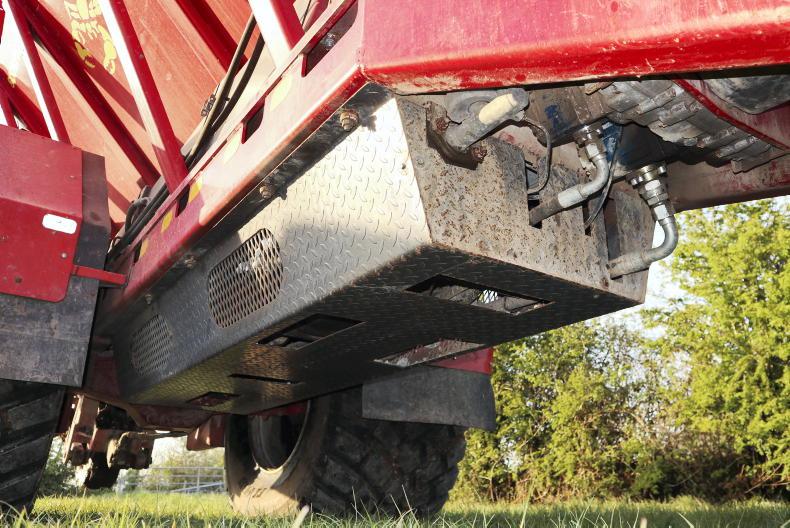
The underbelly is well protected
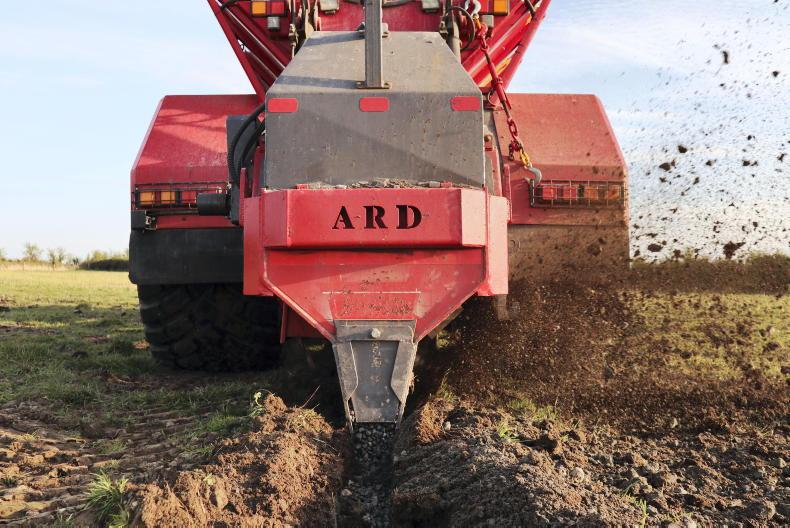
The macerator is a 340mm barrel with 15 hard-faced teeth which spins clockwise, throwing the clay out of the channel.
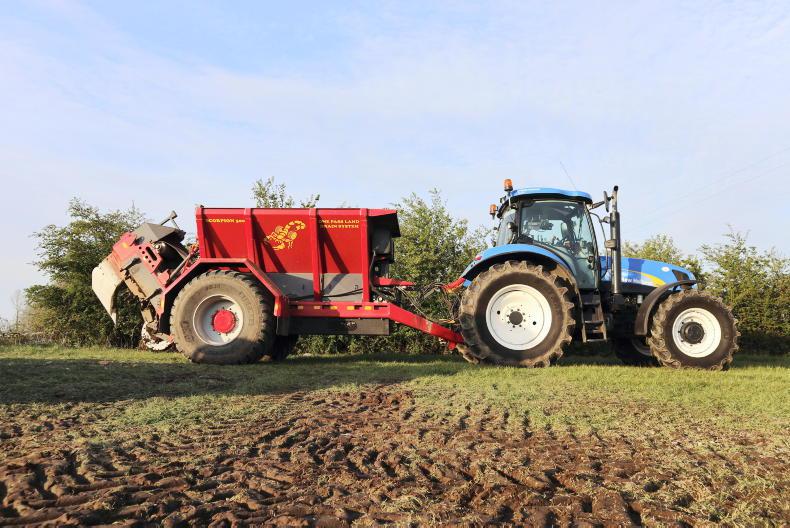
Branded as the Scorpion, the machine is named after the creature with the segmented tail which somewhat resembles its appearance.
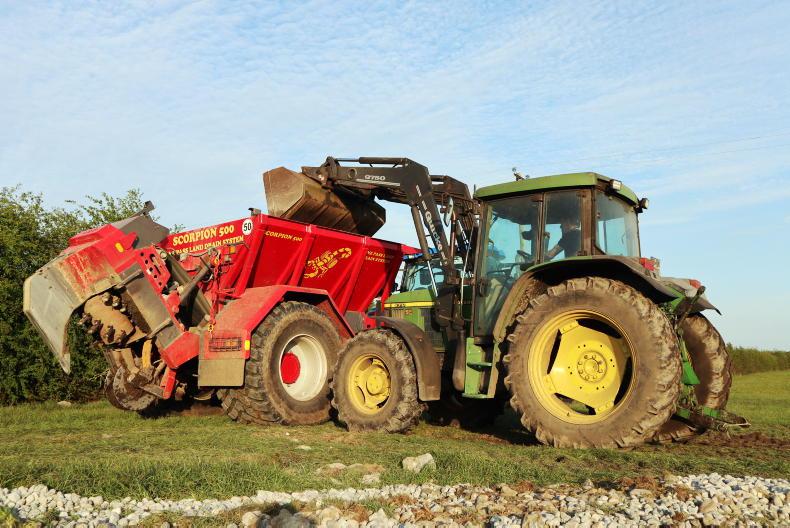
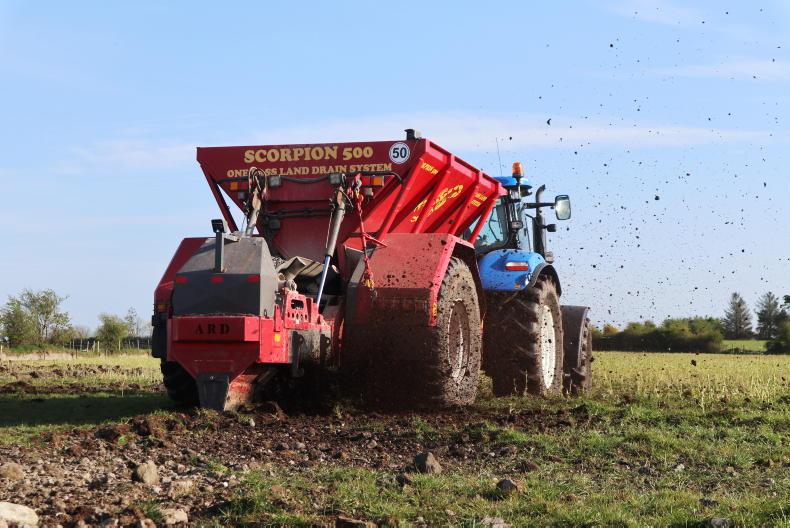
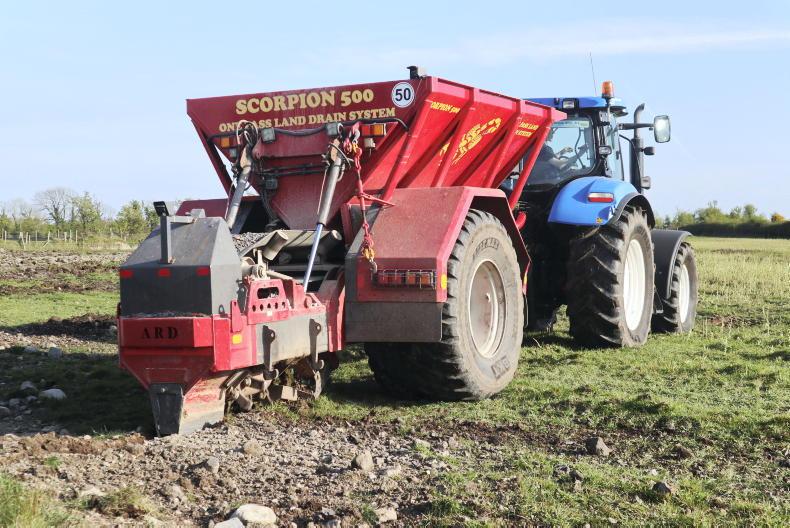
With a heritage in land drainage going back over 30 years, the Scorpion one-pass land drainage machine is the brainchild of brothers James and Frank Coen.
Based in Mullagh, Co Galway, the brothers initially designed and built the machine in 2013 before the final version was up and running in 2015.
James explained that they spent many years draining and reclaiming land using diggers, dozers and stone carts. It was on a trip to Germany where they witnessed a similar one-pass drainage machine in action, only it was a self-propelled unit on tracks.
This machine and previous drainage experience spurred the brothers on to design the Scorpion.
How does it work?
The Scorpion has its own on-board hydraulic system (two pumps which power motors), which is PTO-driven (540rpm).
This system powers the heavy-duty single belt which keeps a small secondary hopper at the rear of the unit fed with drainage chips.
Two leaf-sprung discs 6in apart with scrapers cut two channels into the ground and this is followed by a macerator. The macerator is a 340mm barrel with 15 hard-faced teeth which spins clockwise, throwing the clay out of the channel.
This is followed by a 6in-wide single-furrow plough with a heavy-duty rock tooth. The stone is distributed immediately at the rear of the plough, giving the trench no time to close in.
Branded as the Scorpion, the machine is named after the creature with the segmented tail, which somewhat resembles its appearance.
Machine design
“On a trip to Germany around 10 years ago, I witnessed a self-propelled drainage machine on tracks with a similar one-pass design,” James explained.
“There was no similar machine available in Ireland or England to buy, so we began playing with the idea of designing one.
“We went to Joe Brady of ARD Precision Engineering in Ardrahan in Galway and he turned our design ideas into drawings.
“Together, we collaborated on fabricating and sourcing parts and components for the machine. The team at ARD Engineering fabricated the chassis, the hopper and the plough, etc.”
Sourced from a wheel loader, the unit has a drive axle which can be electronically engaged and disengaged using an electric ram and a dog clutch.
This is an important feature for the type of ground James works on on a daily basis.
Alongside its own PTO-driven on-board hydraulic system, the unit also has its own cooling system (fan and oil cooler), which works automatically.
James noted how the speeds and ratios between the tractor and the unit’s drive axle, and other factors such as belt speed and flow requirement, all took time to set up and perfect.
Originally, the unit was fitted with a 650mm-wide flotation tyre, but was later upgraded to 850/50 R30.5 tyres for additional flotation.
The Scorpion is fitted with a 6t-capacity storage hopper. Typically, the machine empties the 6t load in three to four minutes.
The unit is being pulled by a New Holland T6080 (155hp). James claims that the unit is easy to drive, but the power and weight is needed for traction in difficult conditions.
The cab is home to the control box and three camera screens, which hosts a live feed from six cameras positioned throughout the unit.
The tractor is equipped with a Trimble auto-steer system, but James said this is more so used in the drainage of football pitches.
Tricks of the trade
James noted that the furrow works to one standard depth of 17in. The height to which the trenches are backfilled with stone can be varied. He explained that the goal is to allow surface water to escape and drain away quicker.
“Most farmers like to backfill the trench up to 4in if they are intending on tilling the ground after draining. A 25t lorry-load of chips will cover approximately 500m. We can backfill the trenches to any height.
“Guys draining silage ground tend to backfill them within 1.5in to 2in from the surface and then pull a land leveller over them to fill in the trenches with the loose clay which was deposited.
“We can keep the shores as close or as far out as people want, but, typically, on pitches we go with 4m spacings and 8m spacing on wet farmland.
“Rule of thumb is that if you can spread slurry on the ground then we will be able to drain it using the Scorpion,” he said.
James added that they can use up to 50mm chips, but from their experience, they recommend using washed 20mm chips.
He claims that the secret to success is using clean stone, as it won’t cake when it dries out. This machine doesn’t have the capability of applying drainage pipe.
James said the machine always needs to pull out from a drain for the water to get out of the shores.
For this to happen, a natural flow in the land is also necessary. If the machine meets a large impassable stone, James added that they tend to T-off or around it. Likewise, he said they often T- and Y-off shores, depending on the field.
The cost
Now in action six years, the Coens claimed to have worked in all 26 counties in the Republic over the years, with enquiries for work as far away as Wales.
He noted that they continue to work around the country, typically batching jobs together before travelling. Between trial and error and R&D, James claims the machine has had a build cost of over €100,000.
When asked is there a cost saving using the Scorpion over the more commonly used drainage methods, James explained: “I spent many years draining ground using the traditional methods. Drainage buckets on excavators are V-shaped, meaning the trenches are a lot more expensive to backfill, as they require a lot more chip. Conventional draining methods tend to cost €2.50 to €2.70/m. The Scorpion one-pass method is priced at 70c/m.”
Specs
Drive: PTO-driven on-board hydraulic system.
Hopper capacity: 6t.
Macerator: 340mm barrel, with 15 hard-faced teeth.
Time to empty: three to four minutes.
Trench width: 6in.
Trench depth: 17in.
Tyres: 850/50 R30.5.
Hire cost per m: 70c/m.
Build cost: over €100,000.

The underbelly is well protected

The macerator is a 340mm barrel with 15 hard-faced teeth which spins clockwise, throwing the clay out of the channel.

Branded as the Scorpion, the machine is named after the creature with the segmented tail which somewhat resembles its appearance.






































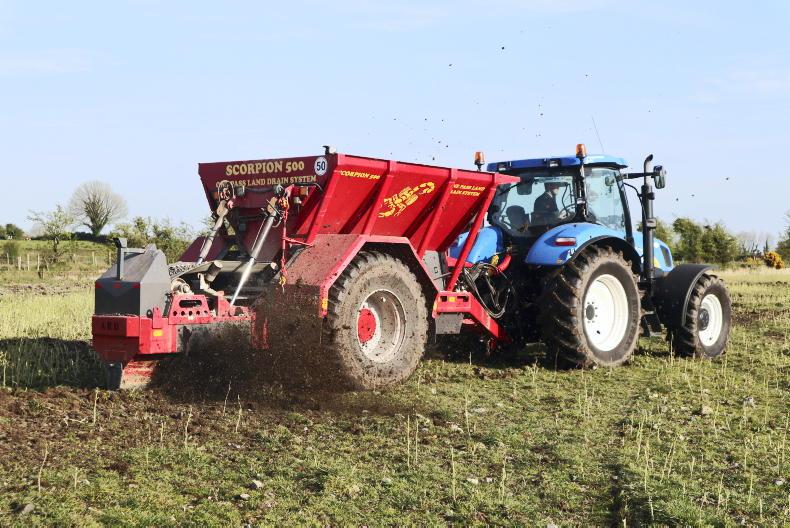


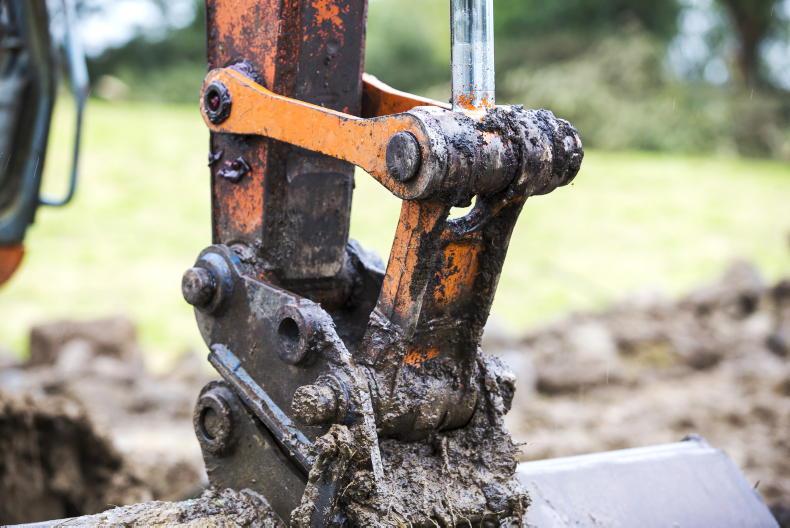
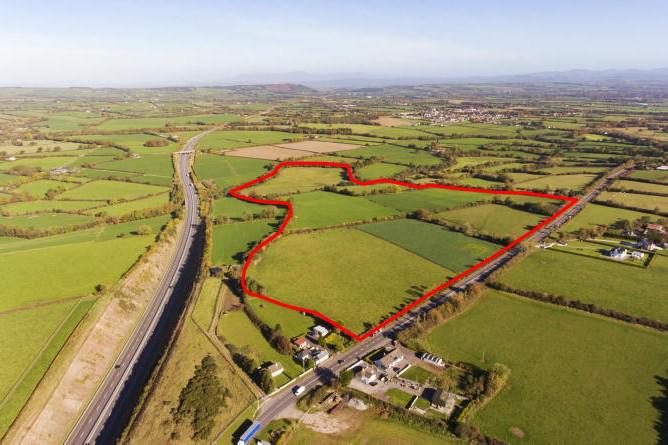
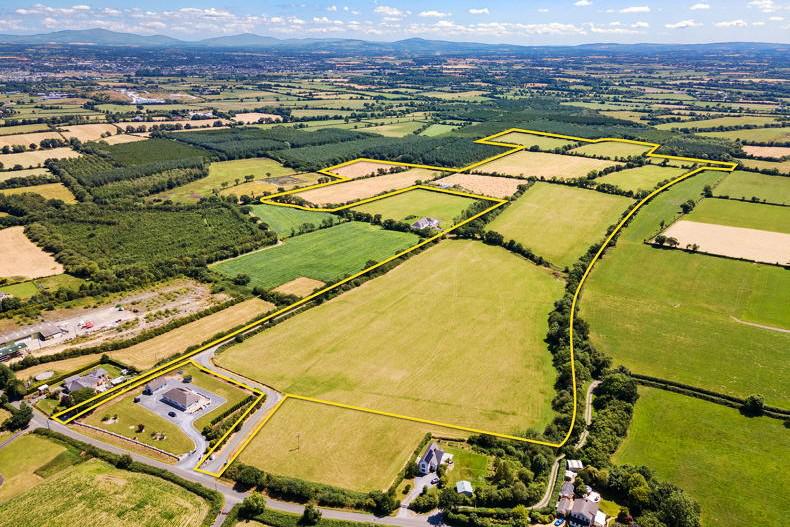
SHARING OPTIONS